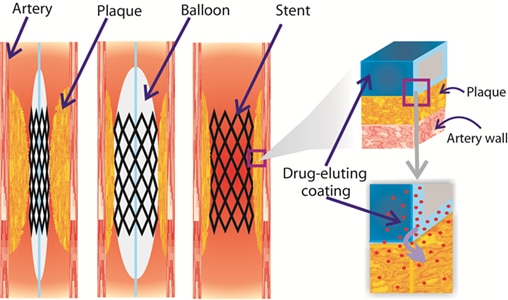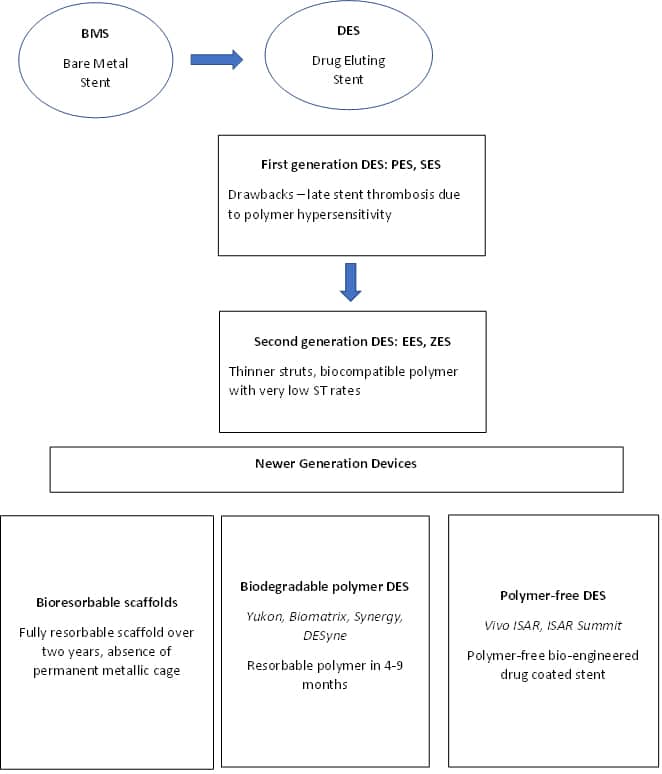There are many types of stents – the specifications of the Coronary Stent can vary based on its components.
Based on the material of the stent, it can either be made of stainless steel (316L VM) or an alloy (either Cobalt-Chromium or Platinum-Iridium).
Based on the drug used, it can be either Sirolimus (mostly), Everolimus, or Zotarolimus. These limus drugs are a category of drugs called immunosuppressants. They are used as antiproliferative agents that block cell division. This is necessary because otherwise these newly formed cells will again block the vessel. These three drugs have different chemical structures, but the mechanism of action is the same.
Based on the drug carrier, it can be classified into polymer and polymer-free. Polymers are also of two types – permanent and biodegradable. In polymer-free DES systems, Probucol is usually used as the drug carrier. A carrier has to be used to achieve desired drug elution levels and release timing.
Based on the method of delivery, it can be either rapid exchange or over-the-wire.
Drug Eluting Stent
Drug eluting stent or DES is a stent which is coated with medication which is eluted (released) during the process to prevent the growth of scar tissue in the lining of the artery. This helps the damaged artery to remain smooth and open. It ensures a good blood flow and reduces the risk of re-narrowing or restenosis of the artery.
Due to its slow healing process and risk of stent thrombosis patients implanted with DES stent should follow their doctor’s instructions strictly on drug therapy (DAPT) which helps to reduce the risk of blood clots (stent thrombosis).
Bare Metal Stent
Bare metal stents are made of stainless steel and don’t have any special coating. They act as a frame to prop open the blocked blood vessels after they are widened with the procedure of angioplasty. The tissue grows around the Stent in the healing process of the artery and holds it in place. However, in some cases, overgrowth of scar tissue in the lining of the artery increases the risk of blocking the artery again.
Bioresorbable scaffold
Bioresorbable scaffold is a popular drug-eluting type of stent. It is approved by the FDA, and widely popular scaffold which disappears after the job is done as the body absorbs it over time.


